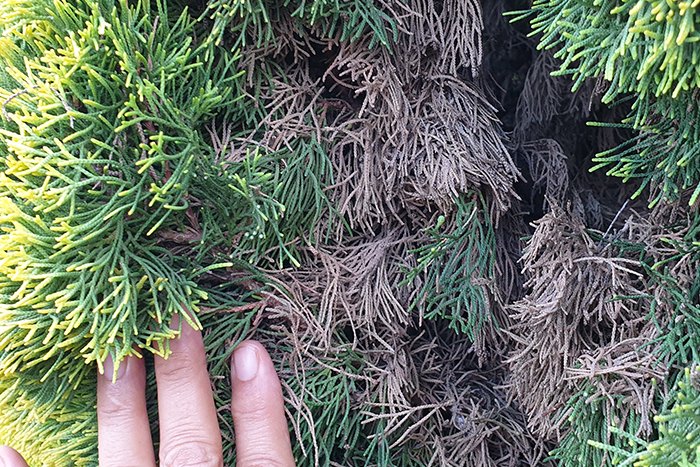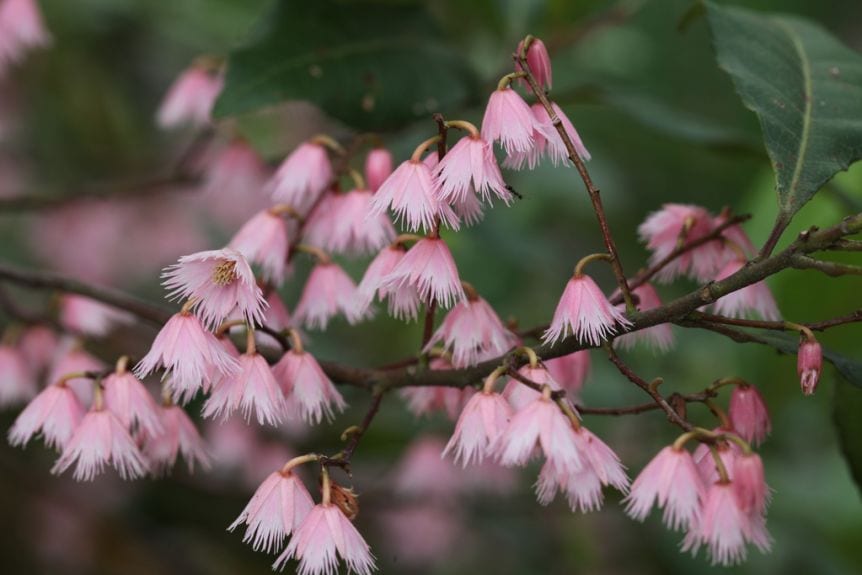Australia has always had fires. They come with the territory. The same can be said of parts of the USA and even Europe.
But the intensity and frequency of those fires has accelerated in the past decade as climates become warmer and, more alarmingly, drier.
Areas that historically have had low fire risks are now experiencing devastating events. In the 2020 northern summer, California, Oregon and Washington were all ravaged by horrendous forest and grass fires.
European countries including Greece, Portugal and even the UK have seen unprecedented fires.

The bush-fires that hit Australia last summer were, by far, the worst experienced in both written and oral histories.
It is estimated that some three billion animals either died or were displaced as a direct result of those fires! Countless millions died from starvation because their food sources had been consumed by the flames.
The fires swallowed close to 20 million hectares, 5,900 buildings and killed at least 34 people. Smoke from the fires circled the globe.
Fanning the flames…
Contents
Most home-owners find gardening a rewarding activity. We plant with abandon – shrubs and trees and ground-covers.
We’re rewarded with birdlife, visual beauty and stunning fragrances from flowers and herbs.
Critically, the shrubs and trees provide shade and create cooling breezes. In fact, research has shown that they can have a significant effect on local temperatures.
But the downside – as so many lost homes witness, those trees and shrubs also provide fuel for the flames. In fact, some species act as a super-fuel for the flames yet others will actually act as a retardant!
The following piece was recently published by Australia’s ABC Science division:
When Brett Hawkins returned to his property north of Bega after the New Year’s Eve bushfires, he found an incredible sight.
“I could see straight away the house was intact … but everything else around it was burnt, with the exception of the mulberry tree,” he told ABC News.

In the face of horror bushfire seasons, Australians are being increasingly encouraged to clear vegetation from around their homes.
But gardens are a source of beauty and inspiration, and provide all manner of benefits — not least shade, wildlife habitat and privacy.
So can certain types of plants, like Mr Hawkins’s mulberry tree, help things stay cool and moist, and reduce the risk to your home?
While there’s no magic formula, here are a few things to think about if you want a bushfire-smart garden.
Are some plants better than others?
Beyond the mulberry tree anecdote, there have been a number of amazing stories over the years of particular plants — many of them European — helping protect buildings from bushfire.
And while it’s dangerous to think there is a simple solution here, it is true that plants differ in their flammability, so can play a role reducing the risk in your garden.
For example, plants with wide, flat, thick or soft, fleshy leaves generally contain more moisture than very fine needle-like leaves, and are less likely to dry out and burn when a fire comes.
On the other hand, scented plants contain waxes and oils that add to flammability, and this is one reason eucalypts burn well.
But some species of eucalypts — those with loose, papery or stringy bark — are more likely to be a fire hazard than others.
Plants with closely packed branches are also more likely to burn easily, plus they trap a lot of dead material that is perfect fire fuel.

Trees with branches that go all the way down to the ground also help fire spread by providing a “ladder” of fuel for fire to spread upwards into tree canopies.
The Victorian Country Fire Authority has developed a handy tool called a Plant Selection Key to help gardeners choose fire-wise plants
CSIRO bushfire risk expert Justin Leonard recommends you plug in the characteristics of plants into the key to work out their flammability.
And, he emphasises, “it’s not a native versus non-native situation”.
There are also many lists of actual species that are supposed to be less flammable than others — just do a quick online search for ‘fire-retardant’ or ‘fire-resistant’ species.
But Brad Murray of the University of Technology Sydney warns these lists can sometimes be contradictory, and often don’t offer much evidence to back them up. He says the most reliable advice comes from bushfire authorities.
Dr Murray has been testing the flammability of species by checking what temperature their branches ignite at on a “plant BBQ“.
His early findings in the Blue Mountains suggest non-native garden species — including lemon, magnolia and camellia — are less flammable than eucalypt-dominated bushland in the same area.
Some lists have noted mulberry as having low flammability, but this particular tree is yet to be tested.
Dr Murray hopes to eventually identify low-flammability natives that could be used in gardens.
“We’d like to screen native rainforest species,” he says.

Whatever species we choose, low-flammability gardens should be seen as just part of a larger “fire-fighting tool box”, says fire ecologist Tim Curran of Lincoln University in New Zealand.
“They are not failsafe, nor should they be the only approach used.”
How important is keeping your garden watered?
Brett Hawkins believes his well-watered mulberry tree provided a nice moist buffer to resist fire.
While the rest of his property had dried out in the drought, he had managed to “sacrifice” a fair bit of water to keep his mulberry tree alive and pumping water through its leaves.
His view is supported by Dr Murray’s latest research that shows moisture in plants helps reduce their flammability.
Earlier research on the 2009 Black Saturday fires by Phil Gibbons and colleagues at the Australian National University also found homes with greener, moist gardens were more likely to survive.

But there are no silver bullets when it comes to a fire-wise garden, Dr Gibbons says.
“Concluding that the one tree was the reason the house survived is a dangerous conclusion to make.”
“Most houses survive bushfires for a myriad of reasons, including luck.”
And some low-flammability species appear to switch to being highly flammable when they dry out.
While experts agree keeping plants well-watered should reduce their flammability, this is tricky to do during drought conditions.
So, if watering is going to be difficult, it might be worth looking for fire-wise species that are also tolerant to extreme climates.
What should I think about in garden design?
Fire authorities emphasise it’s easiest to protect your home if you remove most of the flammable material from around it, creating a ‘defendable space’.
While experts like Mr Leonard support this, they want people to avoid clearing more than is necessary and much of it comes down to garden design.
They say with a bit more thought, we can try and hit a “sweet spot” that reduces risk while keeping the benefits of vegetation.
One principle to bear in mind is to break up the ‘fuel’ to make it hard for fires to reach your house along the ground, which means:
- clearing dead leaves and branches from under trees
- leaving gaps between vegetation — using, for example, paving, pebble beds or fish or frog ponds
- using succulent shrubs as a low-maintenance non-thirsty groundcover
- avoiding plants and combustible mulch right up against your house.

Another principle is to make it hard for fire to reach up into tree canopies from the ground, which means:
- avoiding species that have branches right down to the ground
- avoiding flammable plants under trees (understorey)
- keeping shrubs low by mowing or having grazing animals. In the recent Californian fires, a library was saved by goats eating the flammable scrub around it.
Apart from flames, another danger to your house from a passing fire is radiant heat, which can set buildings alight.
While having trees in the garden could help provide a buffer from radiant heat, they need to be fire-wise species.
Otherwise, the advice is to have most of your trees downwind from the likely direction of a fire — this way, they are less likely to spread embers to your house if they catch alight.
While trees may protect against some embers, Mr Leonard from CSIRO cautions there’s a limit to how much they can do this.
Embers can be blown onto a house even when the fire front is some distance away. The best protection from these, and from any flames that reach a home, is to have a building that is less likely to catch alight, he says.
Balancing risk and benefit
While the right plants in the right place may reduce your bushfire risk, there are no guarantees.
Some fires just won’t be stopped, so always have a bushfire plan and know what you’re going to do if you’re threatened.
RMIT University’s Sarah Bekessy, who is an expert in combining biodiversity and urban planning, urges us to be realistic.
“If you live in a fire-prone environment, there’s got to be a level of acceptance that that’s what you’ve chosen to do,” Professor Bekessy says.
“Some people think the ultimate solution is for the whole world to be a car park without any trees, but this would be uninhabitable. There’s got to be a balance.
“Vegetation doesn’t have to be your enemy when it comes to fire risk — it can actually be your friend as well. It just requires careful thinking and design.”
Global warming is ‘baked in’ at present. It is going to get a lot worse before any mitigation is felt. Australia already has average temperatures 1.4 degrees higher than the long term average.
While 1.4 degrees sounds insignificant, the impact on weather patterns is very significant. Extended dry periods are being followed by torrential rain – most of which runs off before it can soak in.
Lightening storms are becoming increasingly common and are the cause of many fires. It takes little for the dry undergrowth to become an inferno. What you plant at home might just mean the difference between having a home and having a pile of ashes.








